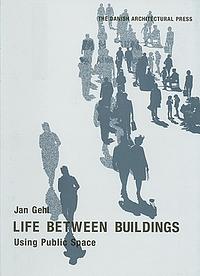Take a photo of a barcode or cover
inga_lara's review against another edition
5.0
Áhugaverð bók um hvernig má bæta skipulag bæja og borga.
red_architect's review against another edition
informative
inspiring
lighthearted
relaxing
fast-paced
5.0
floris_van_rutten's review against another edition
4.0
A classic work that in a completely different way explains the same as Jane Jacobs did with 'Death and Life Of Great American Cities'. It shows what works, instead of what ought to work.
Great starting point to learn more about urbanism and urban design, and probably helps me having more meaningful conversations with my colleagues in the urban design department haha.
Great starting point to learn more about urbanism and urban design, and probably helps me having more meaningful conversations with my colleagues in the urban design department haha.
bitajam's review against another edition
5.0
Mr. Gehl is great! and also so kind to send me this excellent book !
sumatra_squall's review against another edition
4.0
Another urban design classic. First published in 1971, Life Between Buildings: Using Public Space, as its name suggests, talks about the issues planners and designers should think about in creative active public spaces. That to promote active public life, we have to move away from planning approaches that focus on the building structure, its design, layout and functions, but views the space outside the building as an afterthought.
Gehl discusses the need to create invitations for people to enter the public realm and as important, to linger there. If we want multi-user spaces, spaces must first be multi-use. Gehl argues that planning approaches that try to separate different functions - residential, commercial, recreational, etc - into difference spaces breeds monotony and results in the desertification of public space. He also argues for taking a human-centred design approach that is in sync with how people perceive and interact with the world - for instance, streetscapes that that nestle comfortably within, rather than extend far beyond, our field of vision; routes and paths that we can comfortably navigate on foot; spaces that allow people to transition gradually from private to public spaces, etc.
What I loved about the book was its ability break down and explain what most of us might instinctively sense, but find difficult to articulate. Why some places like Copenhagen and Venice (even outside peak tourist season) have active street life but others look like ghost towns. Why some places are inherently attractive to people, drawing people to walk and linger in the space whereas others do not. The clean writing was a bonus.
Gehl discusses the need to create invitations for people to enter the public realm and as important, to linger there. If we want multi-user spaces, spaces must first be multi-use. Gehl argues that planning approaches that try to separate different functions - residential, commercial, recreational, etc - into difference spaces breeds monotony and results in the desertification of public space. He also argues for taking a human-centred design approach that is in sync with how people perceive and interact with the world - for instance, streetscapes that that nestle comfortably within, rather than extend far beyond, our field of vision; routes and paths that we can comfortably navigate on foot; spaces that allow people to transition gradually from private to public spaces, etc.
What I loved about the book was its ability break down and explain what most of us might instinctively sense, but find difficult to articulate. Why some places like Copenhagen and Venice (even outside peak tourist season) have active street life but others look like ghost towns. Why some places are inherently attractive to people, drawing people to walk and linger in the space whereas others do not. The clean writing was a bonus.
beatrice_apetrei's review against another edition
4.0
I find it appropriate to just quote an Austrian architect I met some time ago, mister Robert Mair, “Sometimes all you need to enjoy your stay outside is a bench under a tree.”
siddharthagolu's review against another edition
4.0
One of the principal joys of reading is to discover the magic hidden in the seemingly banal things in life. I would've never cared to think twice about the intricacies of designing buildings and urban spaces, had it not been for this book. This serves as a gentle introduction to the fascinating study of how subtle differences in design of public spaces affect interactions on a much more broader scale.
